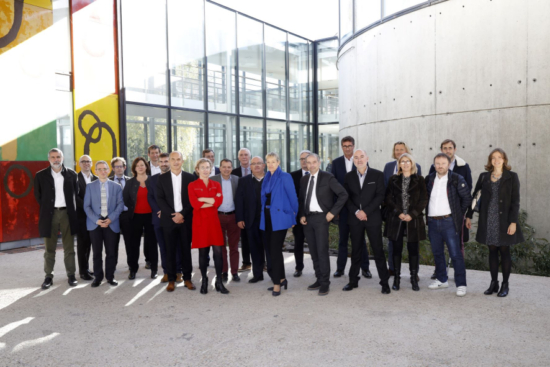Michelin: SimatLab speeding up development
 The SimatLab team includes researchers from Michelin and ICCF (Photo: Michelin)
The SimatLab team includes researchers from Michelin and ICCF (Photo: Michelin)
The SimatLab public-private research laboratory, created in 2017 by the Michelin Group and the Clermont-Ferrand Chemical institute (ICCF), is renewing its works on modelling future materials for another four years. Furthermore, the laboratory is speeding up its development by integrating new partners and widening its areas of research to the medical and hydrogen fields.
The CHU de Clermont-Ferrand (University Hospital) becomes the laboratory’s new academic partner alongside a new multi-disciplinary team of chemists, physicists, pharmacists, and mathematicians.
SimatLab is also implementing a new pilot structure to host associate members from outside the academic world. This entity will allow for working on ad-hoc research subjects, carried by industrial third parties (SMEs or large groups). This unique structure will increase the laboratory’s research capacities by generating a cross-fertilisation of subjects and allowing future partners to be identified.
Lastly, Simatlab is developing new working lines in medicine and hydrogen. Systems in the first field are complex as they are comprised of large-size molecules that are difficult to simulate. As for fuel cells, the materials are comprised of molecules that play both a mechanical and chemical role during the conversion of hydrogen into electricity. Michelin notes that the research challenges are huge, and the progress made will be “beneficial to the issues that are central to the questions of future mobility and personal well-being.”
This common laboratory models future materials around three major lines of research:
- A physical and digital approach to the change of scale between that of a molecule (1 nanometre) and that of continuum mechanics (1 micrometre)
- Use of simulations to assist the development of innovative materials
- Joint use of the simulation results and experimental data to validate the approaches and enrich these through artificial intelligence.




Comments